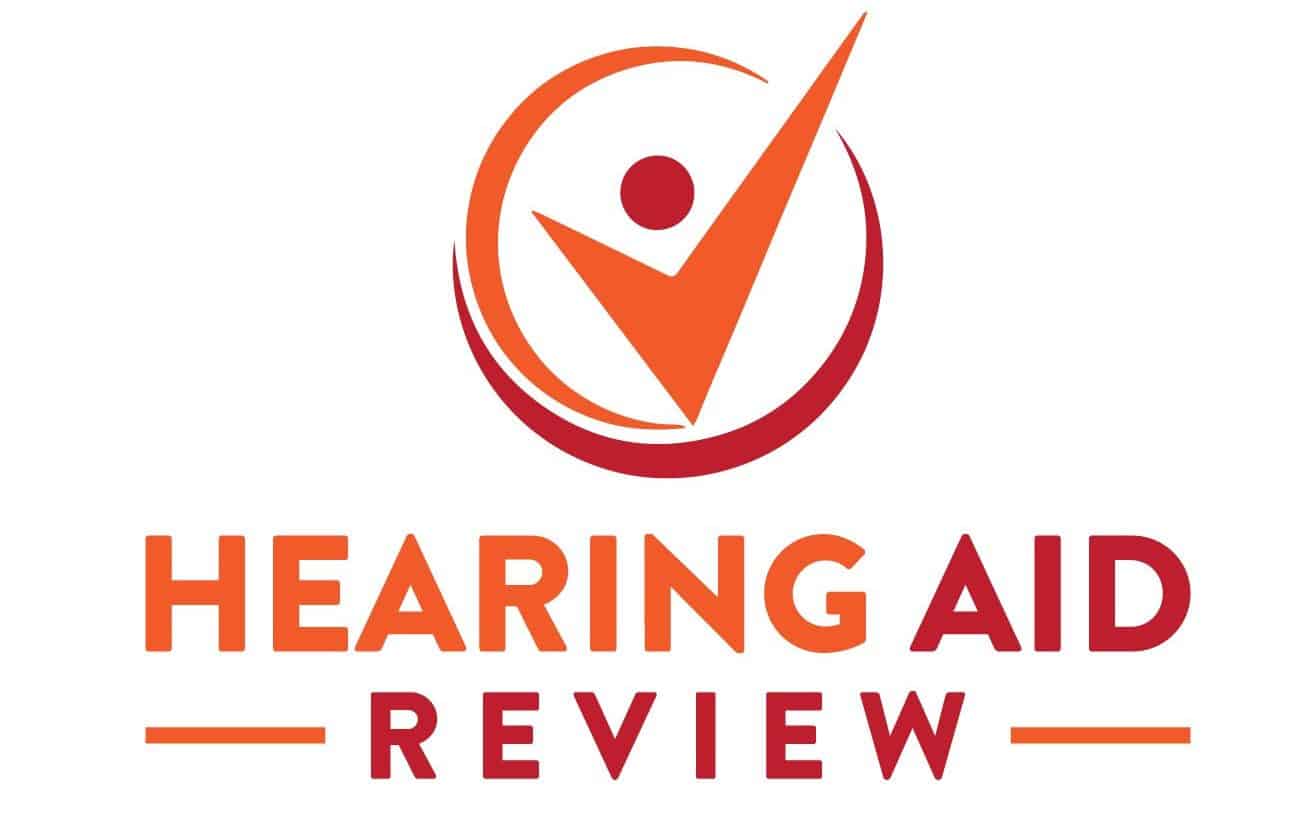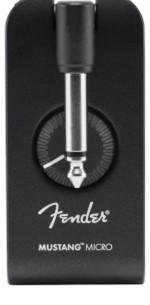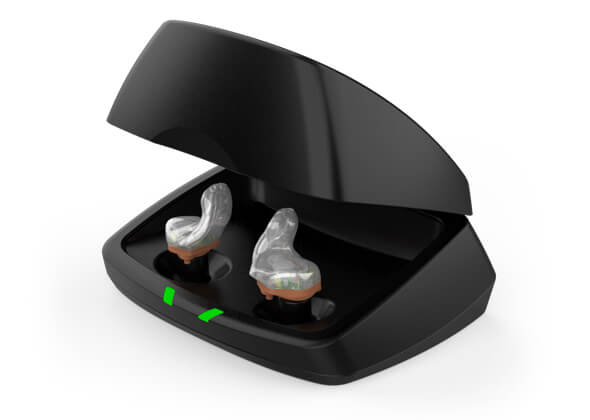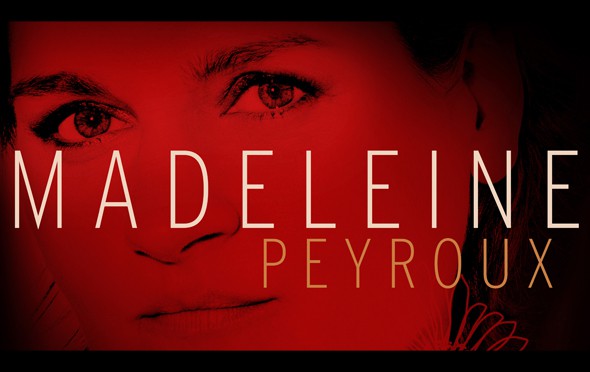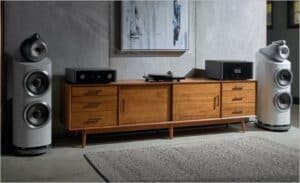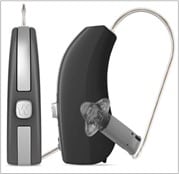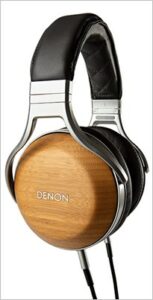Phonak P30 RIC Hearing Aids
Comfort and Fit
The body of the P30 re-chargeable aids is compact, but wider than 312 battery aids. The difference in size isn’t large, but it is significant when the aids are vying for space with spectacles and facemask loops.
The size S domes on M receivers were easy to insert in my ear canals. My LH ear canal is narrow, and the dome on that side feels a bit uncomfortable at times. Phonak don’t make domes smaller than size S.
Ease of use
Full control of the aids is possible using the smartphone app. It is easy to use and has a comprehensive set of functions.
Volume and program changes can be made using the up/down buttons on the aids. It is easy to get it wrong, because the buttons are small and fiddly to use.
Notification of changes made is by a series of beeps. The volume change beeps are logical. Program identification is made by remembering how many beeps are associated with each program, which is confusing.
I did not find it easy to control the Phonak aids without using the smartphone app. The design intention seems to be that the aids would normally be controlled using the app, the assumption being that everybody is in possession of a smartphone and would want to use it to control their hearing aids. That isn’t the case with me and there must be other people who don’t expect, or want, to use a phone to control their aids. The ability to control hearing aids without using a smartphone shouldn’t be overlooked.
Sound Quality
Phonak P30s are bright sounding aids. I think that the brightness enhances understanding of speech.
The aids amplify head sounds such as breathing and chewing. I found it disconcerting at first, but I quickly got used to it.
I noticed that the head sound amplification was reduced when I removed my spectacles. I think that the wider, slightly resonant, body of the aids, contacts the arms of my spectacles, transferring head sounds to the microphones.
The Feedback Manager is very effective. Its operation is audible on higher frequency sounds, but it is not an issue in most listening situations.
Programmes
I used the Universal program most of the time, but I also used Music with Feedback Manager and Music without Feedback Manager.
The Universal program worked well. My understanding of speech was good, including TV dialogue. Some sounds, such as those generated by cutlery on crockery, or running water, were accentuated, whereas others, such as the sound from a car engine, were subdued.
I did not find the Universal program to be good for listening to music. The operation of the Feedback Manager interferes with notes in the higher register adding an unpleasant tremolo effect to single notes. Chordal sounds are smeared in the treble. The effect was also present to a lesser extent with the Music with Feedback Manager program. The effect was not there with the Music without Feedback Manager program, which sounded quite good. Feedback was an issue, but the problem was reduced by lowering the volume of the aids.
Streaming
Phonak Paradise aids will stream from any Bluetooth 4 or 5 enabled sending device, not just phones. There is a low level of background hiss. Sound quality is very good, and treble sounds aren’t affected by the Feedback manager.
I paired the aids with my Android phone, my Windows tablet, and a desktop PC. Pairing was simple enough.
The streaming feature was useful for taking calls, but I was particularly interested in how the aids would sound with streamed music. The track that I used for testing was Madeleine Peyroux’s version of Careless Love
I played an 835kbps FLAC CD rip and a 262kbps m4a version of the track, using both the phone and the tablet. There was little or no difference in sound quality between the phone and the tablet.
Background hiss was audible, but it wasn’t intrusive. The sound of both versions of the track was good, the better quality of the uncompressed version of the track being detectable. The drums and Hammond Organ came across particularly strongly, but the double bass sound lacked body and resonance. Madeleine Peyroux’s voice sounded good, but lacked some of its timbre.
Listening to streamed music through aids is a different experience from listening through Hi-Fi speakers. Bass notes are clear and well defined through aids, but lack body and resonance. Treble sounds are bright and clear. The overall sound is lively and listenable.
Charger and Charging
The charger unit is a rounded clamshell design with a shiny finish. A degree of dexterity is required to open the charger and insert the aids, but different from that required to insert a new battery in non-rechargeable aids. Insertion and removal of the aids is easy enough.
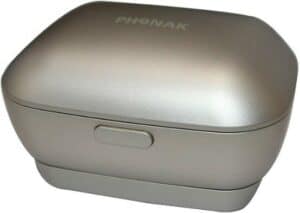 The instruction manual states that the power connector is USB C. It isn’t. It’s micro-USB.
The instruction manual states that the power connector is USB C. It isn’t. It’s micro-USB.
Conclusion
The Cambridge dictionary defines paradise as:
A place or condition of great happiness where everything is exactly as you would like it to be.
P30s are excellent hearing aids, but Phonak have got a fair bit of development work to do if their Paradise range of hearing aids is to live up to its name.
FHJ 29/11/2021
The Phonak P30 Hearing aids were lent to me for testing by Mr Robert Donnan, of RJD Hearing Care, Cleckheaton.
